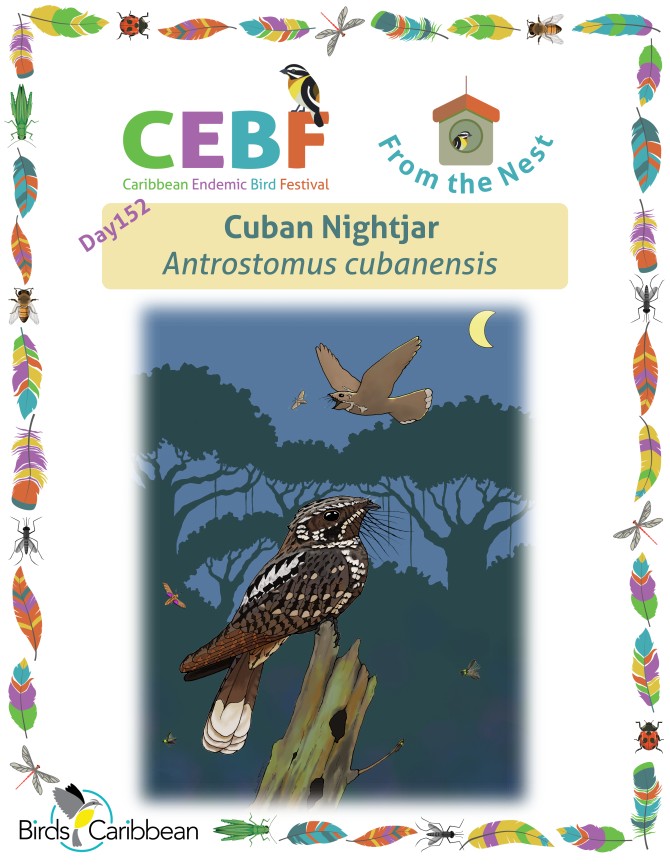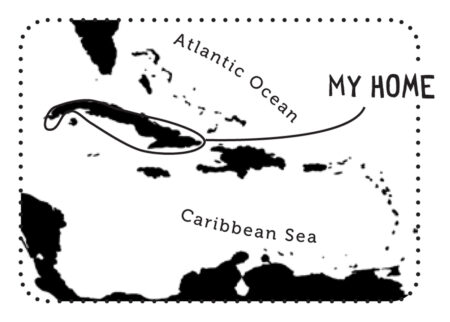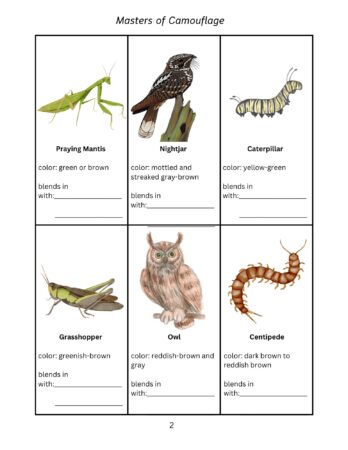Celebrate the Caribbean Endemic Bird Festival (CEBF) with us! Our theme in 2024 is “Protect Insects, Protect Birds”—highlighting the importance of protecting insects for birds and our environment. Have fun learning about a new endemic bird every day. We have colouring pages, puzzles, activities, and more. Download for free and enjoy learning about and celebrating nature!
Endemic Bird of the Day: Cuban Nightjar
If you are fortunate enough to visit the first national park established in Cuba—Pico Cristal National Park, you will no doubt be thrilled by the beautiful landscape and abundant wildlife. But while your eyes drink in the bountiful beauty around you, we urge you to also turn your gaze down, and scan the forest floor as you walk along the trails for an especially mysterious bird! You see, spotting this elusive species will require vigilance—it blends in superbly with the leaf litter, rocks, and twigs of the forest floor!
If you’re lucky and attentive though, you might just get a glimpse of the cryptically patterned Cuban Nightjar! You may know it as the Greater Antillean Nightjar (Antrostomus cubanensis) but this species was split in 2023 into the Hispaniolan Nightjar (Antrostomus ekmani) and Cuban Nightjar (Antrostomus cubanensis) based on vocal differences between the two populations. The Cuban Nightjar’s song is described as a low, burry “weeyo” given in rapid succession, whereas the Hispaniolan Nightjar’s song, “pit, whoo-vore?” has an overall rise in pitch.
The Cuban Nightjar has two subspecies, the nominate A. c. cubanensis and A. c. insulaepinorum. The subspecies of the Cuban Nightjar A. c. cubanensis is 25 to 29.5 cm (9.8 to 12 in) long. Males weigh approximately 76 g (2.7 oz) and females 70 g (2.5 oz). Their upperparts are dark brown mottled with grayish buff, pale buff, and grayish brown. The tail is brown and the three outer pairs of feathers are tipped white in males and beige in females. The innermost pair has grayish-brown chevrons. The wings are brown with spots, bars, and mottles of lighter shades. The face is tawny with dark brown flecks, the chin and throat dark brown with flecks of cinnamon, the breast dark brown with large spots and smaller buff-white flecks, and the belly and flanks are dark brown with gray flecks. A.c. insulaepinorum is smaller, much darker, and has a shorter tail.
The nominate subspecies of the Cuban Nightjar is found on the main island of Cuba and most of the adjacent small islands of the archipelago. A.c. insulaepinorum is found only on the Isla de la Juventud (“Island of Youth”, formerly Isla de Pinos). They inhabit forests, swamps, and adjacent semi-open habitats. The Cuban Nightjar is crepuscular. It feeds at dawn and dusk on insects, most likely sallying from a low perch or from the ground. Although it is a small and stocky bird, it has been seen maneuvering swiftly among the vegetation, wood patches, or along the edges of roads in the dark.
This bird breeds between March and July. The usual clutch of two grayish-green eggs, spotted with brown, is laid directly on the ground among dry leaves. Both male and female are believed to incubate the eggs. If a predator approaches their nesting area, the incubating birds will give an injury-feigning display, similar to the Killdeer’s broken wing display, to distract and lure the predator away from the eggs or chicks.
The Cuban Nightjar has been listed as a Least Concern species by the IUCN. In Cuba it is protected by law from direct (killing or capturing) and indirect (habitat destruction) threats. However its population is believed to be declining. Cuban conservationists emphasize this excellent insect hunter’s importance in controlling pests, and they encourage communities to not destroy its habitats. Learn more about this species, including its range, photos, and calls here. Great news! If you’re in the Caribbean, thanks to BirdsCaribbean, you have free access to Birds of the World and you can find out even more in the full species account of this bird!
Thanks to Arnaldo Toledo for the illustration and Yanelis Sánchez Serrano for the text!
Colour in the Cuban Nightjar
Download our West Indies Endemic Bird colouring page. Use the photos below as your guide, or you can look up pictures of the bird online or in a bird field guide if you have one. Share your coloured-in page with us by posting it online and tagging us @BirdsCaribbean #CEBFfromthenest
Listen to the song of the Cuban Nightjar
The song of the Cuban Nightjar is a low, rapidly repeated, burry “weeyo.”
Puzzle of the Day
Click on the image below to do the puzzle. You can make the puzzle as easy or as hard as you like – for example, 6, 8, or 12 pieces for young children, all the way up to 1,024 pieces for those that are up for a challenge!
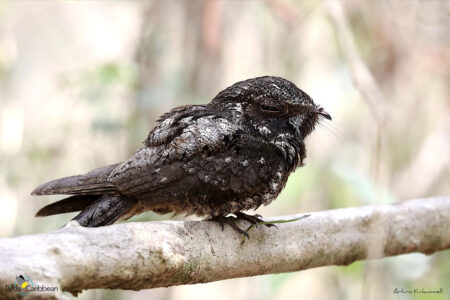
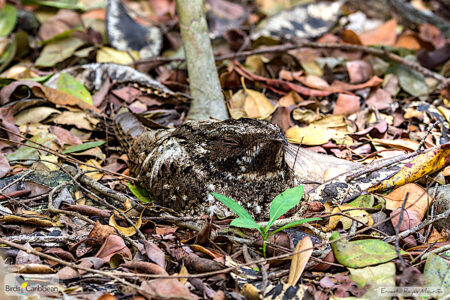
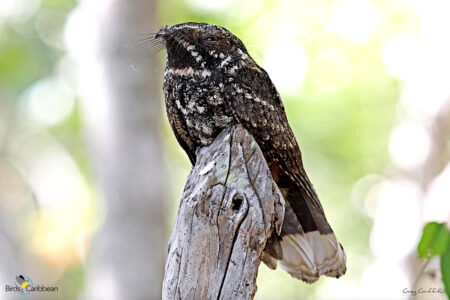
Activity of the Day
FOR KIDS : Birds like the Cuban Nightjar are very good at hiding in plain sight. Their colours help them to blend in with their environment. Insects also use camouflage to blend in with their environment and keep them safe from other animals that love munching on them. But note that it also helps some insects catch prey that doesn’t see them! Their colours, patterns and even physical shape make them indistinguishable from their surroundings.
In this activity you’re going to go outside (with an adult) and help insects and birds find the best spot for them to blend in such as in the grass, amongst fallen leaves, branches, leaves, flowers, dirt, tree trunks, and other plants.
You will need:
- pencil
- scissors
- clipboard (optional)
- copy of Masters of Camouflage page
Can you find the ‘Masters of Camouflage’ page to print (in colour or black and white) and full instructions of this activity in here !
FOR KIDS AND ADULTS : Enjoy this video of Cuban Nightjars in the wild!

